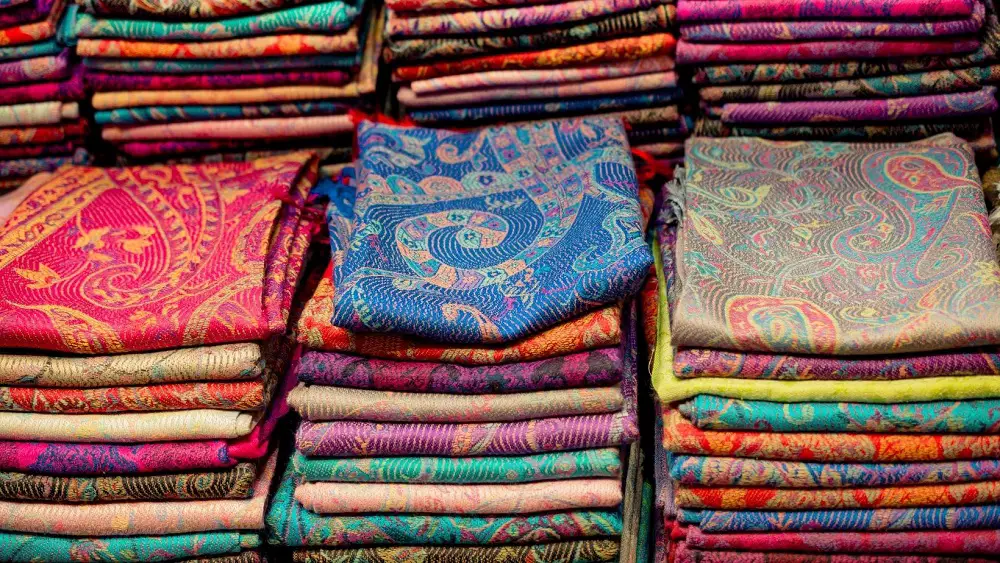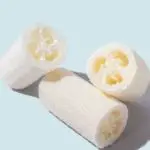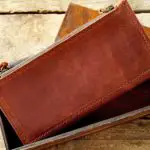How often do you pay attention to the origins of the fabrics that you use? Every day, we use fabric either at home or as clothing we wear. But where does it come from and is it ethical?
In this article we’re going to look at different fabrics and the fabric making process.
Cotton
Cotton is one of the most common fabrics and is pure and natural. It is regarded as the best affordable fabric that allows skin to breathe and is cooling when used as bedding etc.
It is made from cotton plants that grow in hot tropical regions such as China, US, Turkey, and Brazil. Texas is currently the largest producer of cotton worldwide.
Cotton production isn’t as simple as you may think. In times past, cotton was picked by hand and required much physical labor to make a small amount.
In modern times a cotton picking machine is used which picks up the plant and strips off the boll which is the tiny pods that contain seeds that eventually grow the cotton fibers.
Once picked, the cotton is kept in the fields until it’s ready to go to gins. The gins are machines that have mounted wire teeth that separate the cotton fibers from the seeds. They are then cleaned from any residual dirt and dust.
When the cotton is ready it’s stored until it gets sent to a textile factory that finishes the production process by creating clothes, bedding and the like.
So, when you purchase a new shirt that says 100% cotton, you know what process it has been through. Cotton is completely natural and doesn’t raise an ethical issue.
You can even purchase pure organic cotton that has come from fields that haven’t been sprayed with chemicals and pesticides.
Wool
Wool is commonly used for warmth and goes through a lengthy process before becoming the jumper you wear.
The first step is sheep shearing. On average, a sheep’s fleece weighs around 3-4kgs. No harm comes to sheep during the shearing process, in fact, it’s beneficial as the coat is heavy and burdensome for the sheep to carry around.
Some farmers still hand shear sheep, but in recent years machines have been developed that use computerized arms to carefully clip the sheep.
Once the wool is free it is broken up then cleaned to remove dirt and contaminants. The best of the wool is separated to use for clothing, and other parts are used for rugs or soft furnishings.
The wool is cleaned by placing it in a mixture of water, soap, and alkaline solution. Before it dries, it’s often dipped in oil to soften it.
The next step is similar to the process cotton goes through, but it’s called carding. This process consists of rotating rollers with pins which blend them into thin sections.
The carding removes remaining dirt and strengthens them up. The smaller slivers are drawn together and made thinner through drawing. Once that’s finished, it’s sent off for spinning.
During the spinning process, the fibers are intertwined together to form a yarn strand and spun together with 4 or 5 other strands that stick to each other.
The spinning is typically done on a machine and then wrapped round commercial drums.
The final process is weaving, where wool yarn is transformed into fabric. The wool will be woven into either a plain or twill weave.
The finishing process includes full immersion in water, which helps the fabric stick together and interlock. A fascinating amount of work goes into the process.
Cashmere
Cashmere is considered a luxurious fabric and tends to be on the more costly side. Cashmere is the wool from various breeds of goats. The wool is much lighter than sheep’s wool.
Furthermore, unlike sheep, goats don’t have as much body fat and can suffer without their coats, so production of cashmere raises an ethical debate.
Most cashmere comes from China. So, how is it actually produced?
Goats naturally start to shed their coats in the spring. Farmers start the brushing process around April, as the hair is loose and easier to extract.
Raw cashmere is the under down of the goat’s coat mixed with outer hairs. Traders and processors then buy the hair and ship it off for the formal processing.
The hair is then sorted for quality and separated into grades, cleaned and then stored.
Once ready it will be further sorted into colors which are usually a combination of brown, gray, cream, and white.
The hair then goes through a further washing process to completely rid it of impurities. The clean hair is then put through a dehairing machine, which separates coarse hair from fine hair and graded for quality. If the residual hair is 3% or above, it can be classed as commercial cashmere. It’s a tricky process of removing contamination whilst retaining the pure softness of the hair.
Once the dehairing process is complete, the fabric is shipped all over the world to factories where knitters, spinners, and weavers work their magic and make them into clothes and rugs.
Before that point it usually has to go through the final process of combing. Combing separates the long and short fibers, keeping the longest fibers.
The long fiber is called the top and shorter ones the noil. The top is spun into worsted yarn, which is a medium weight yarn that is used to make clothing and cloth.
Silk

Silk is probably one of the most expensive and luxurious fabrics available. The cost is largely down to the labor intensive process of production. Silk is a natural fiber that comes primarily from the silkworm called Bombyx Mori.
This amazing worm produces a fabric that is light and strong. So how does this humble worm produce something so amazing?
Females lay around 400-500 eggs that hatch to become silkworms. In a controlled environment, manufacturers incubate them until they hatch into caterpillars.
They are fed mulberry leaves to encourage growth, and within 3-4 weeks they are 3 inches (ca. 8 cm) long. The worm will then be attached to a tree or frame where it rotates its body and starts spinning silk.
The worm does these thousands of times for just over a week. Each worm only produces one strand of silk, so you can imagine how many worms it takes to produce enough silk to keep up with demand.
Once the cocoon is spun they are put in boiling water to soften the sercin that holds it together, it also helps keep the thread safe and intact. The threads are removed in a painstaking process from the cocoon and placed on a reel.
Next, the threads are cleaned and washed as well as bleached before dyeing. The colors used for dyeing in times past usually came from colored plants and fruits, and the threads were soaked in bundles together with water and the leaves.
This process took many days and several soakings whilst the threads absorbed the color. These days they speed up the process by using reactive or acid dyes, which allows for more color combinations and options.
Once the threads have achieved the required color, they will be woven. Much silk production is still produced using a simple spinning wheel and any machine that has been invented simply replicates the procedure, albeit producing the finished product more quickly.
The final part of the process is weaving. There are a variety of weaves used such as open, satin, or plain.
The weaving process will interlock several threads around each other and produce a set piece of fabric.
Silk always requires a finishing process. This process is what gives silk the soft shiny appearance and is mainly achieved by treating with chemicals designed to reduce creases and withhold fire if necessary.
Silk doesn’t create any ethical issues and can be enjoyed with a clean conscience.
The above are just 4 popular fabrics, but there are a plethora of other fabrics that we use from day to day. One thing it shows is that it is possible to enjoy luxurious fabrics and still live a sustainable life and be kind to animals.
Other materials such as leather don’t offer the same reassurance. Understanding how things are produced will help us make informed consumer choices.






